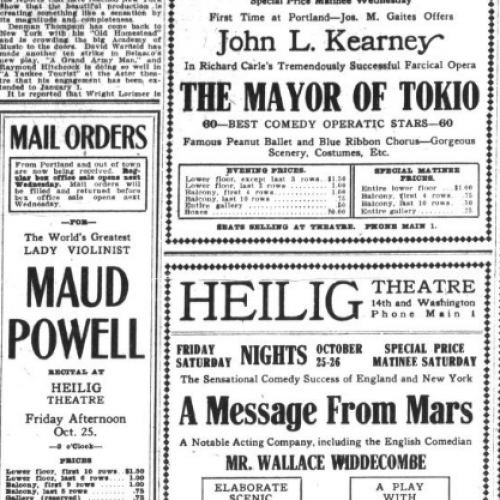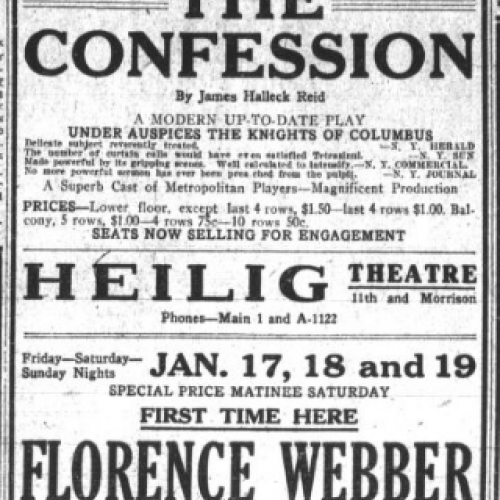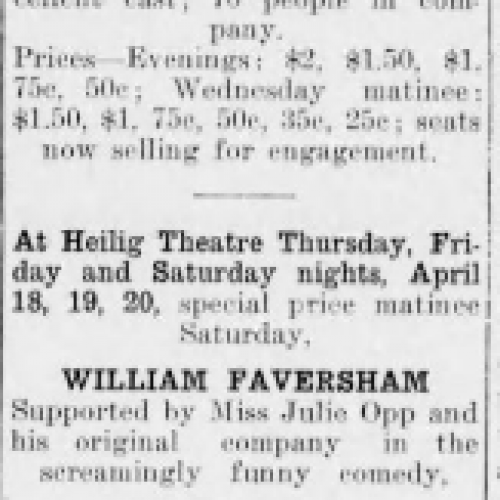The Heilig theater, located in Portland Oregon, was a vibrant and thrilling addition to the Portland theater scene in the 1900s. It was built in 1910 and slowly became a staple for movie patrons in the Portland area. Although the Heilig was well known as a movie theatre, it was also extremely popular for showing comedic operas and vaudeville shows. One of its most notable performances included a production of Zandonai's Conchita starring soprano Tarquinia Tarquini in 1912 (1). It was also a regular stop for the touring Opera company Lambardi Grand Opera Company (2).
Throughout the copious amount of advertisements published for the Heilig theater, it is clear that they utilized celebrity appearances in order to capture the attention of new consumers throughout their advertisements[3]. In comparison to other traditional Portland theatres such as the Empire and the Grand, many theatres relied on advertising the films and ticket prices to attract new customers to their theatre at this time. This was a very standard form of advertising due to the success rate of other businesses in Portland. However, the Heilig was different because they prioritized the actors and performers coming to their theatre over other traditionally advertised information. Their advertisements stood out drastically in comparison to other newspaper advertisements because they often incorporated pictures of the actors or performers along with their ad. They would also make the size of the text for the celebrity larger than the text of their theatre name[4]. This indicates that the Heilig may have had to rely heavily on celebrity appearances in order to draw in a consistent audience. Featuring celebrity appearances occurring at the Heilig in advertisements is a strategic way to draw in new fans. The Heilig received a lot of attention from this advertising tactic due to the large impact that advertising a celebrity name has for a particular business. This tactic was utilized extremely well by managers and owners to the success rate of advertising celebrities for the purpose of attracting more consumers.
Footnotes
1. Waterhouse, John CG (1992), 'Zandonai, Riccardo' in The New Grove Dictionary of Opera, ed. Stanley Sadie (London)
2. Season of Grand Opera, Heilig Theatre, March 24, 1916. Multnomah County Library. Retrieved August 26, 2016.
3. Historic Oregon Newspapers, University of Oregon Libraries. "The Oregon Daily Journal, January 12, 1913, Page 35, Image 35." Journal Print Co.
4. Historic Oregon Newspapers, University of Oregon Libraries. "The Oregon Daily Journal, October 20, 1907, Page 53, Image 53." Journal Print Co.


